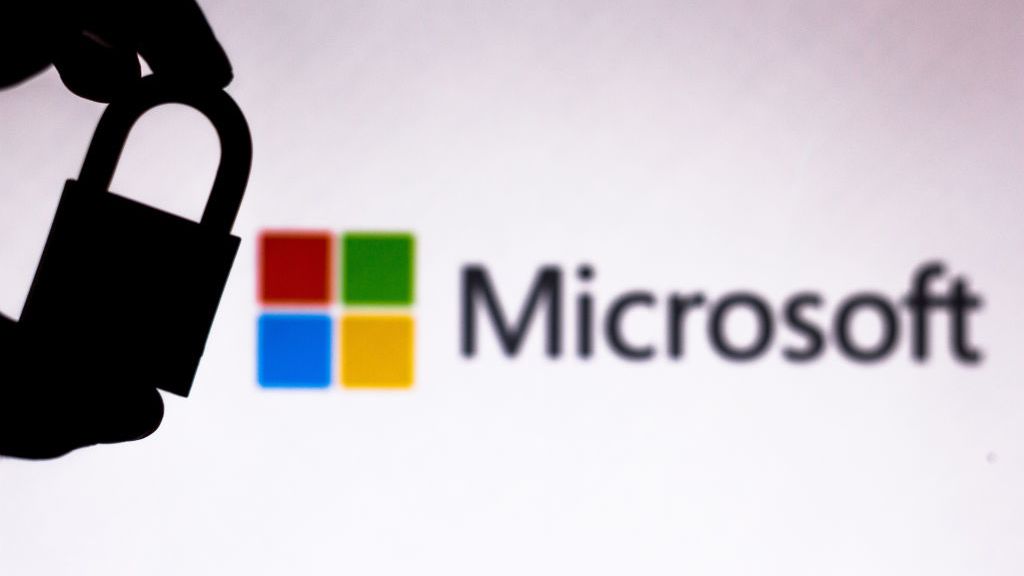Beating the bad bots: Six ways to identify and block spam traffic
Not all traffic is good. Learn how to prevent bad bots from overrunning your website


Advancements in technology have helped us propel forward, changing the way we work and live our daily lives. However, its rapid adoption has led to less successful means. We have all seen and participated in those various bot tests that some websites carry out, where we have to select the picture tiles which have particular objects. This is to control the usage of the site and reduce spam traffic.
Spam traffic is used in some cases by cybercriminals to commit scams and fraud, and has become a tool for phishing scam and malware spread. It is problematic, as it is inexpensive to create and send. In 2020, spam messages accounted for a colossal 58.71 percent of email traffic.
What is a bad bot?

There are a range of different bots that you find on the backend of the internet carrying out different types of tasks. Some are harmless, such as search engine bots used by Google and Bing, which help the service specifically by browsing the internet to help make available content that can be useful to users based on search queries.
However, bad bots are used in an entirely different way to serve a different purpose. These include searching sites and scraping data to benefit other sites, or sell on and steal information and repost it under a different identity.
Bad bots also can disturb site metrics, as they inflate search results and increase website traffic unnecessarily, leading to slower loading times and unnecessary investments in hardware to maintain the website infrastructure.
They are also able to perform malicious acts on-site, which lead to damaging networks through things such as distributed denial of service (DDoS) attacks. These attacks flood sites with data higher than a level that sites can handle.
Bad bots are mostly organised on botnets, which are a collection of internet-connected devices that have been infected by malware, allowing hackers to control them. Cybercriminals use botnets to instigate a botnet attack, and these attacks consist of malicious activities.
Get the ITPro daily newsletter
Sign up today and you will receive a free copy of our Future Focus 2025 report - the leading guidance on AI, cybersecurity and other IT challenges as per 700+ senior executives
Attacks such as these are hard to prevent, as they can come in many shapes and forms as discussed above, such as emails, but they are even harder to control as they are not really considered illegal. It is possible and legal to create a botnet of computers that an individual or company owns which they have permission to control.
How to identify spam traffic

Traffic bots are likely to be hitting a wide variety of websites every hour, and so, here are some insights into how to best identify spam traffic.
1. Issues with page load speed
Conducting a page load speed test regularly is good practice to identify if a traffic bot has hit your site. If your website loading speed suddenly looks different between the tests, that's a good indicator. Although there are many reasons why your loading speed may decrease, especially if you have made some changes, checking the page load speed is the first action and indicator.
Measuring bounce rates also gives you a good indication as to whether your site is being spammed: a high bounce rate means non-human traffic. Measuring a natural audience's behaviour compared to bot behaviour and analysing the traffic metrics will give you clear indication of whether your site is being spammed or not.
2. Duplicate content
For many websites, the value lies in the content that is placed onto it. Bots have a way of invading sites and duplicating content. If you do find duplicate content that comes back with a higher percentage from a plagiarism checker, there is a chance your site has been hit by a bot that is scraping the content of your site.
3. Verifying IP addresses and sources of traffic
Other data such as IP addresses and the sources your traffic is coming from indicate if your site is receiving spammed traffic. Regular and high numbers of return visits from the same IP address could be an indication that your site is getting bot traffic. If you also see a new increase in traffic from other regions and countries you hadn't before, there is a good chance that's a traffic bot.
4. Monitor metrics
If you keep an eye on site traffic, it will be easy to predict when a traffic bot is hitting your site. When you notice a sudden increase in traffic count to your site all at the same time, chances are your site is being hit by a traffic bot. A high traffic count means a high amount of bots or the same for frequently returning to your site.
How to block spam traffic in Google Analytics

1.Filter traffic analytics
Monitoring and filtering analytics data from your site gives you a clear and reasonable idea of the types of information and data removed from your site. All you will need to do is create a separate view in Google Analytics, which will give you this information. You can go to the admin section and click on the + on the ‘All website data’ menu. From there, click on ‘create new’ and set an appropriate time zone. This is vital, as it will allow you to compare data more accurately.
2. Add personal spam referrals
Based on the data that comes from your website, Google Analytics is quite good at blocking bots from your site. However, even after doing the above step, there will still be some referrals that potentially slip through the system. To help catch the ones that slip through, open your referral report and sort your descending data according to bounce rate. This means those with the most bounce rate should be at the top. By using the advance filters, you will be able to see website sessions that go beyond a certain threshold.
3. Block bots and spiders that you detect
There’s a chance you could end up with several bots in your SEO traffic, which can be a nightmare. However, it is possible to not have to remove them all manually, as Google Analytics has elements that take care of it all. It will block all the known bots, and save you lots of time and energy.
One of the best things about this is that when it comes across a new bot, Google automatically updates it to get rid of it. Simply click on 'Exclude all hits from bots and spiders' in the new view you created in step one under view settings.
Another great tool for identifying bot traffic is Finteza. The tool automatically identifies the quality of incoming traffic and gives it a specific category (e.g. “Clean Traffic”, “Bot traffic”, “Cookie Manipulation”, “Spam”, and more).
4.Setup a bad bot referrer filter
In the new view you have created, create a new 'bad referrers' filter by going to 'Admin'>' View'>' Filter'>' Add Filter', and create a name for it. Once this is done, click on 'custom'>' Exclude'. Once this is done, in the 'Filter Field' section click on 'Campaign Source'. Here you will be able to input the domains to keep them off your site.
5.Block traffic coming from specific countries
Blocking traffic from different countries is only recommended if you are sure you are receiving spam traffic from these specific countries. You wouldn't want to prevent yourself from getting any kind of traffic that can convert into paying customers, and so you need to be confident that this traffic is spam. To block spam traffic, go to your admin tab and create a new view. From here click 'Filters'> 'New Filter Button'. Here you will be able to filter out your traffic by blocking countries.
One of the most essential parts of blocking bad bots and spam is to work on the practice of keeping an eye on it, and keeping up to date with it in your weekly and monthly tasks. This is because of the way spamming works and the amount of spam. Although you have set restrictions, you may find that you are getting spammed from other countries, or that Google may not have automatically caught the bots, which means you will have to do it manually.
Sead Fadilpašić is a freelance tech writer and journalist with more than 17 years experience writing technology-focussed news, blogs, whitepapers, reviews, and ebooks. His work has featured in online media outlets from all over the world, including Al Jazeera Balkans (where he was a multimedia journalist), Crypto News, TechRadar Pro, and ITPro. Sead's experience also includes writing for inbound marketing, where he creates technology-based content for clients from London to Singapore. Sead is a HubSpot-certified content creator.
-
 Bigger salaries, more burnout: Is the CISO role in crisis?
Bigger salaries, more burnout: Is the CISO role in crisis?In-depth CISOs are more stressed than ever before – but why is this and what can be done?
By Kate O'Flaherty Published
-
 Cheap cyber crime kits can be bought on the dark web for less than $25
Cheap cyber crime kits can be bought on the dark web for less than $25News Research from NordVPN shows phishing kits are now widely available on the dark web and via messaging apps like Telegram, and are often selling for less than $25.
By Emma Woollacott Published
-
 Seized database helps Europol snare botnet customers in ‘Operation Endgame’ follow-up sting
Seized database helps Europol snare botnet customers in ‘Operation Endgame’ follow-up stingNews Europol has detained several people believed to be involved in a botnet operation as part of a follow-up to a major takedown last year.
By Emma Woollacott Published
-
 Horabot campaign targeted businesses for more than two years before finally being discovered
Horabot campaign targeted businesses for more than two years before finally being discoveredNews The newly-discovered Horabot botnet has attacked companies in the accounting, investment, and construction sectors in particular
By Ross Kelly Published
-
 Brand-new Emotet campaign socially engineers its way from detection
Brand-new Emotet campaign socially engineers its way from detectionNews This latest resurgence follows a three-month hiatus and tricks users into re-enabling dangerous VBA macros
By Ross Kelly Published
-
 Microsoft says “it’s just too difficult” to effectively disrupt ransomware
Microsoft says “it’s just too difficult” to effectively disrupt ransomwareNews The company details its new approach to combatting cyber crime as the underground industry drains $6 trillion from the global economy
By Connor Jones Published
-
 Ukraine's vigilante IT army now has a DDoS bot to automate attacks against Russia
Ukraine's vigilante IT army now has a DDoS bot to automate attacks against RussiaNews The 270,000-strong IT Army of Ukraine will now combine supporters' cloud infrastructure to strengthen the daily attacks against their invaders
By Connor Jones Published
-
 Microsoft's secure VBA macro rules already being bypassed by hackers
Microsoft's secure VBA macro rules already being bypassed by hackersNews Recent analysis of Emotet activity has revealed a shift away from malicious Office documents to drop malware
By Connor Jones Published
-
 Emotet infrastructure has almost doubled since resurgence was confirmed
Emotet infrastructure has almost doubled since resurgence was confirmedNews Researchers confirm the infrastructure has also been upgraded for a "better secured", more resilient operation
By Connor Jones Published
-
 DOJ extradites Ukrainian man who used a botnet to decrypt login credentials
DOJ extradites Ukrainian man who used a botnet to decrypt login credentialsNews The 28-year-old allegedly sold passwords to other criminals on the dark web
By Rene Millman Published